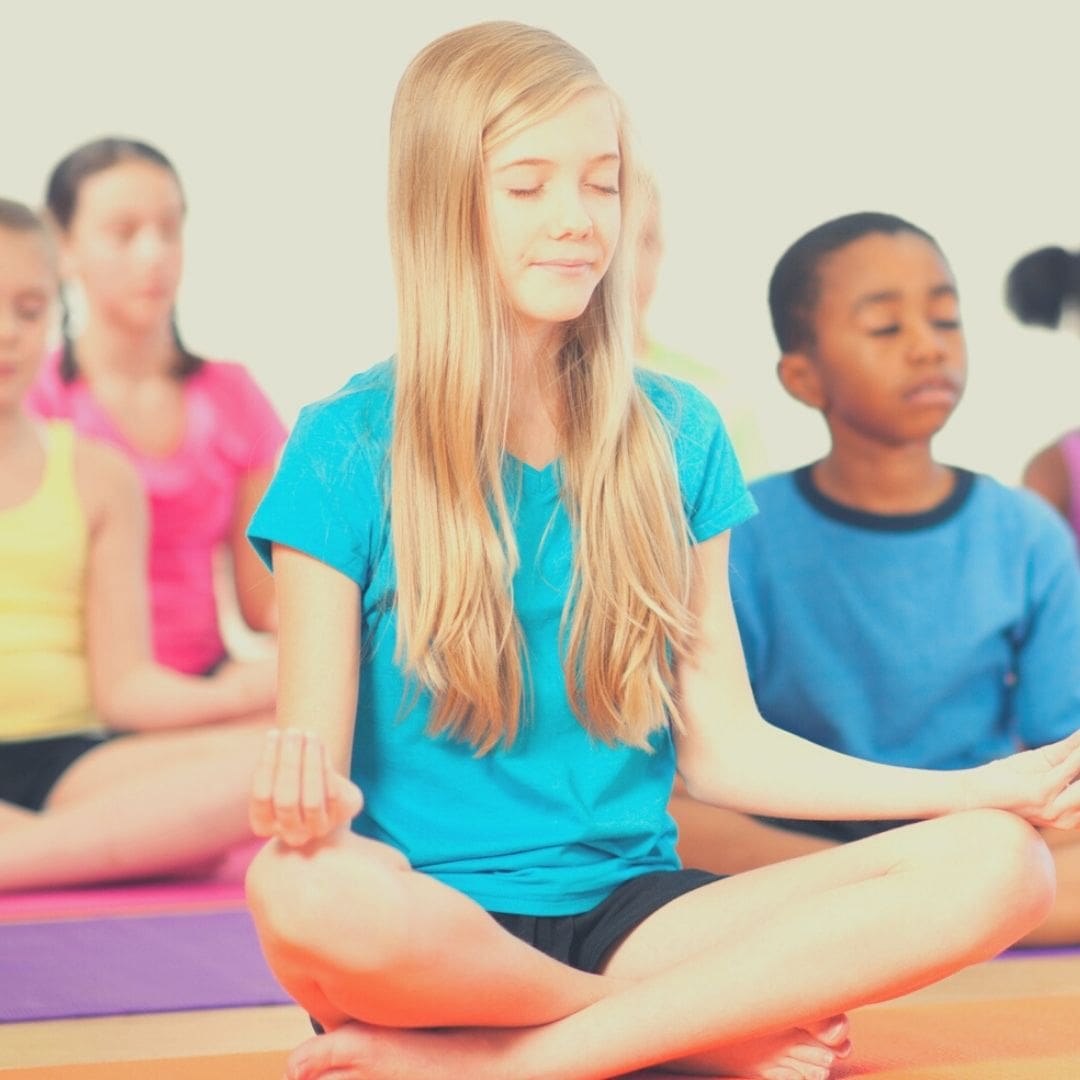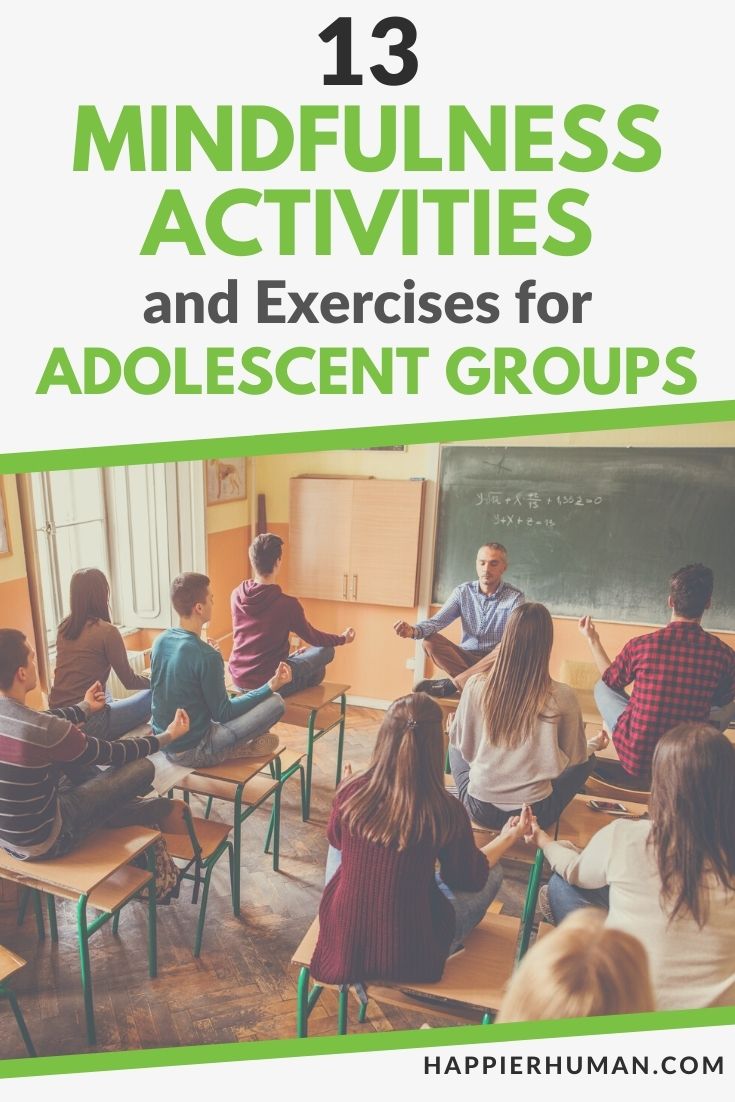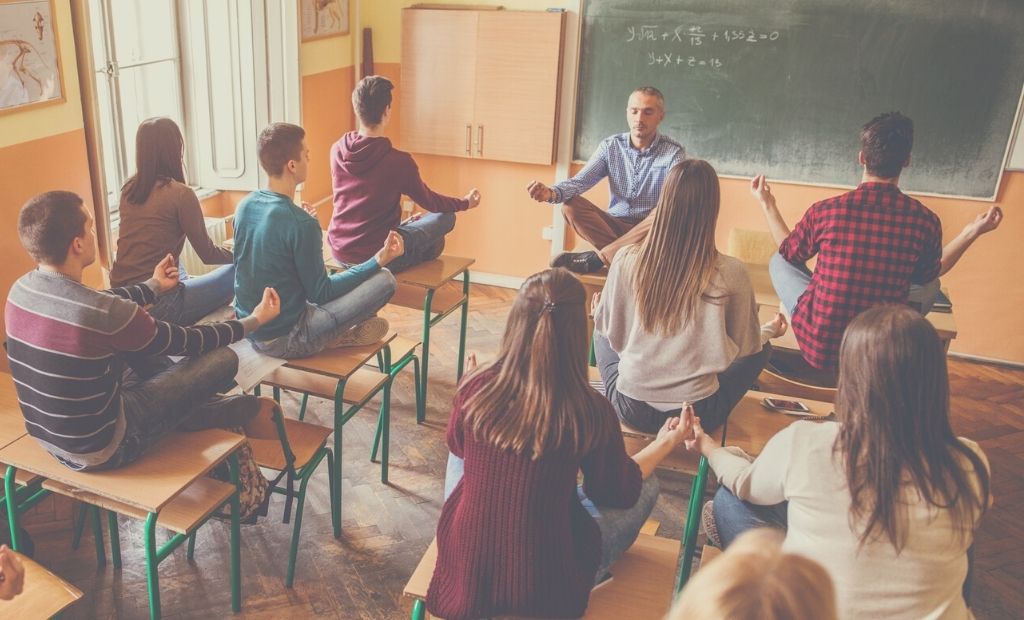There might be affiliate links on this page, which means we get a small commission of anything you buy. As an Amazon Associate we earn from qualifying purchases. Please do your own research before making any online purchase.
Mindfulness activities are rising in popularity. Mainly because it is an excellent way to engage in life and be present.
Whether you are interested in this for your child, or for yourself, the more one actively engages in these activities… you will find they become less anxious and can handle stress so much better.
Many assume that adolescents (ages 10-19) wouldn’t be interested in these techniques or take them seriously… but many teens have an interest in mindfulness when they see the benefits the activities bring.
Developing a routine of participation in mindfulness activities isn’t hard at all. Anticipation and planning help you become proactive, eventually adding mindfulness activities out of almost anything your adolescent deals with.
Below are 13 mindfulness activities for adolescent groups that will fit easily into one’s daily routine and help them be successful in every area of life.
They will find peace (overcoming stress), enhance their friendships and relationships (especially in the family unit) and likely triumph in their schoolwork.
(Side note: Want a simple way to reduce your stress and anxiety? Then try writing these 35 mindfulness journaling prompts to live more in the present moment).
What You Will Learn
- 1. Dragon Breathing
- 2. Four-Square breathing.
- 3. Mindfulness Music
- 4. Mindful movement
- 5. Shaking
- 6. Puzzles
- 7. Apps
- 8. Body Scanning
- 9. Blindfolded Movement
- 10. Eye Gazing
- 11. Breathing Together
- 12. Coloring & Doodling (The Zentangle Method)
- 13. Crafting
- Final Thoughts on Mindfulness Activities and Exercises for Adolescent Groups
1. Dragon Breathing
Dragon breathing is a fun method to get the adolescent to work on the art of slow, deep breathing. This can be done with or without supplies, as some like to include object activities to make the method more fun and help the youth learn more quickly.
Some will use creative stories to make the technique more memorable when the child is exercising this activity. Here is what dragon breathing entails:
2. Four-Square breathing.
Four-square breathing, also known as box breathing, is also the taking of slow, deep breaths. Overall, it heightens the adolescent's productivity and focus, plus it is an excellent way for them to reduce stress. While also being a powerful stress reliever.

Anyone could benefit from four-square breathing techniques. This type of meditation is common among professional athletes, armed forces, law enforcement, first responders, doctors, and medical staff.
3. Mindfulness Music
Music can be a great gateway for the adolescent into the world of mindfulness.
To participate in this activity, your youth would need their favorite music and privacy. A place where they won’t be interrupted, away from other siblings if possible.
Headphones aren't needed but helpful as they pick out and listen to the music; you just want the tunes to be something your adolescent isn’t familiar with.
While listening and relaxing, they can ponder how the music makes them feel within themselves as they listen. This exercise includes listening for various sounds and how the song's pace affects their breathing during the song.
4. Mindful movement
Movement gets the adolescent’s body loose, releases pent-up energy, and allows for creativity. This activity could also include music. This appeals to most adolescents.
With this activity, they move their bodies to the music body without thinking about how they look or perform various dance moves.
It's not an extravagant activity, and there is no right or wrong to it. Adolescents are to just take in the music, moving to it, and showing outwardly how it feels to them.
5. Shaking
Shaking is another way to blend mindfulness movement. However, no music is needed for this exercise. This activity helps release hurt, stress, and other harmful forms of trauma your adolescent may be experiencing.
Adair Finucane, a health and trauma coach, was once quoted as saying, “Sometimes I just get goofy with it and make crazy movements. You can also just pause and … notice your breathing. Maybe even sigh it out, take a deep breath, and then take one of your arms and start wobbling it around a bit. Hang out here for three more breaths.”
The key to this exercise is to be alert and inquisitive.
While participating in this exercise, your adolescent should notice the feeling of being in their bodies. Taking mental note of how they feel before and after the activities – physically and emotionally.
6. Puzzles
Puzzles are an excellent way to strengthen the mind, and they're also a mindfulness practice. Puzzles like jigsaw puzzles, crosswords, riddles, word finds, and Sudoku require focus, mind presence, and attention to detail. So, while they can be challenging, your adolescent will find them rewarding as well.
Adolescent kids, many times, don't even recognize that they are participating in a mindfulness activity when working on puzzles because they are having so much fun.
The things the youth should consider after this activity is when they are stumped while working on a puzzle and get irritated, how their body feels. They should also note how they feel when they successfully put together another puzzle and how its success and frustration affect their breathing throughout the process.
7. Apps
There are several apps tailor-made for adolescents. This age group is so technically sound, apps make for an excellent way to teach them mindfulness.
Aura is proclaimed the #1 Mindfulness App and has many accolades to back it up. They have been featured in The Oprah Magazine and time. They have also been featured on NBC, Forbes, Tech Crunch, and Mindful. They also received “Best of Honors” by Apple in 2017.

Aura works by sending meditation reminders to the adolescent, with everything from the sounds of nature, goals lists, journal to express gratitude and meditation timer. Each meditation lasts about 3 minutes long. All features are connected to the Google calendar as well. You will find this app is very personalized and offers a wealth of wisdom from experienced coaches and therapists.
Aura offers a 7-day free trial and $59.99 per year. This app can be downloaded to your Android or IOS device. Just visit aurahealth.io for the links.
Stop, Breathe, and Think (also known as MyLife Meditation) is an app for younger adolescents, ages 10 or 11. This app suggests meditations for their overall health (mentality, physically, and emotionally). It’s created on the premise that adolescents have a difficult time progressing from mindfulness exercises to meditation. This app assists in remedying the situation to help them settle down. Most of all it is free. You can download it on your IOS or Android device. Just visit my.life for links to download this incredible app today.
Another mindfulness app that is great for the adolescent in your life is Headspace. Headspace is an excellent fit for teen adolescents who are new to mindfulness. Its content is animated, friendly, easily accessible, and inviting. Their motto is “Meditation Made Simple.”
Headspace can be downloaded for free but with limited options. However, you can subscribe to have full access to the apps content. One membership offers a 7-day free trial, then you pay just $12.99 a month. The other gives you a 14-day free trial when you pay the annual subscription fee of $69.99. Clink on the following link or visit headspace.com for Android and IOS links to download this amazing mindfulness app.
This app comes with multiple sweet and soothing voice options provided by its founder and expert therapist. It has been downloaded millions of times with excellent reviews.
For an extensive list of mindfulness apps with reviews, visit this CNBC link.
8. Body Scanning
Body scanning is an easy, laid-back process that eases the mind. This exercise for the adolescent uses alertness to scan their body for pressure, stress, and discomfort.
To perform this activity, adolescents will lie down, relax, and make themselves aware of how they feel.
This activity creates a higher consciousness of the adolescent's bodily sensitivity. It helps them have greater insight into what is causing them undesirable feelings.
9. Blindfolded Movement
This activity for the adolescent heightens their senses. It involves being blindfolded (of course) and using free-flowing movement and activities, not caring what they look like personally.
To participate, they would move at a snail's pace, sensing their surroundings and being mindful of their feelings.
10. Eye Gazing
This activity requires another participant to engage with the adolescent. They will sit face-to-face with each other, set a timer, and gaze into each other’s eyes.
Suppose the adolescent is participating with a larger group. In that case, they can switch partners until they have had a chance to engage with all involved in the activity.
11. Breathing Together
Breathing Together with a partner is a lot like eye gazing, except the adolescent begins by sitting back-to-back with a partner having their spines aligned. Then with eyes shut, they spend ten to fifteen minutes practicing focus exercises, taking note of how their stomachs when breathing – how it rises and falls.
Your adolescent will continue this exercise by attempting to synchronize their breathing with their partner’s. This activity will make your adolescent more comfortable with their partner. They should begin to also see anxiety and trepidation disappear.
12. Coloring & Doodling (The Zentangle Method)
Coloring books are available in abundance. You can pick one up almost anywhere. For doodling, the adolescent uses small pieces of paper called tiles to doodle on. Another name for this exercise is the Zentangle Method. This activity is a relaxing, easy, and fun one.
With this method, the adolescent will draw simple shapes and create patterns like s-curves, lines, and dots while keeping their drawing hand relaxed. This activity increases focus, self-esteem, and creativity.
13. Crafting
Crafting gets the adolescent out of their head and into their bodies. While crafting, they will work with their hands, with various colors, textures, and shapes.
This activity is suitable for your adolescent's mental health. Creating and participating in this activity helps them to release stress and anxiety significantly while improving their moods. Studies found when engaging in arts, crafts, and other artistic outlets experienced less mental stress. However, they did show elevated levels of brain activity and zest for life.
Final Thoughts on Mindfulness Activities and Exercises for Adolescent Groups
Mindfulness is a fairly understated practice that doesn’t have to be difficult to master.
It is clearing your mind and becoming more self-aware of what is going on in your world… while listening to the cues from those around you.
It is getting in touch and in balance with you.
The exercises outlined in this article will send you well on your way to a more relaxed, self-confident adolescent who is better able to handle stress.
Whether you are a teen looking for mindfulness activities for yourself, a parent looking for your child, a teacher for students, or a caregiver of an adolescent you can find many great resources on the subject at Big Life Journal, Mindful.org and Brilliant Mindfulness
Amazon.com also has many excellent books on the subject. One of which is “Mindfulness for Teens in 10 Minutes a Day: Exercises to Feel Calm, Stay Focused & Be Your Best Self.” The paperback version sells for $12.89, or you can download it for free if you are a subscriber to Kindle Unlimited.
Finally, if you want a simple way to reduce your stress and anxiety, then try writing these 35 mindfulness journaling prompts to live more in the present moment.


